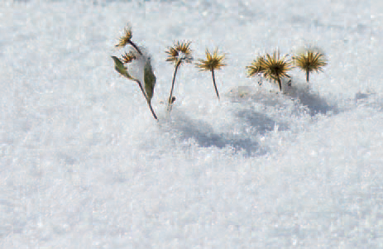4.4. TONE AND COLOR
Every photo has a range of tones and many also have color components. Beyond the graphic elements you can identify in your photos, tone and color complete the picture for the viewer. You should learn to evaluate tone and color separately.
4.4.1. TONE
Tone refers to the levels of brightness in the photograph, from solid black to pure white. Shadows are dark tones; highlights are bright tones. The majority of nature photographs display a wide range of tones, from black or near black to white or near white.
A photograph with mostly dark tones is called low key and feels heavy and dramatic. A photo with mostly light tones is called high key and feels bright and airy.
Evaluating and controlling the tones in your composition is a key skill in designing effective photographs. A range of tones is shown in 4-20, 4-21, and 4-22.
Figure 4-20. ABOUT THIS PHOTO Image of White Sands, New Mexico, shows just three distinct tones — light, medium, and dark (ISO 100, f/32, 1/8 sec. with a Canon EF 100-400mm IS L lens).

Figure 4-21. ABOUT THIS PHOTO Close-up of snow and flowers demonstrates a high-key image (ISO 100, f/11, 1/350 sec. with a Canon EF 70-300mm lens).

4.4.2. CONTRAST
The term contrast is most often used to describe variation between tones. In this context,
Get Nature Photography Photo Workshop now with the O’Reilly learning platform.
O’Reilly members experience books, live events, courses curated by job role, and more from O’Reilly and nearly 200 top publishers.

